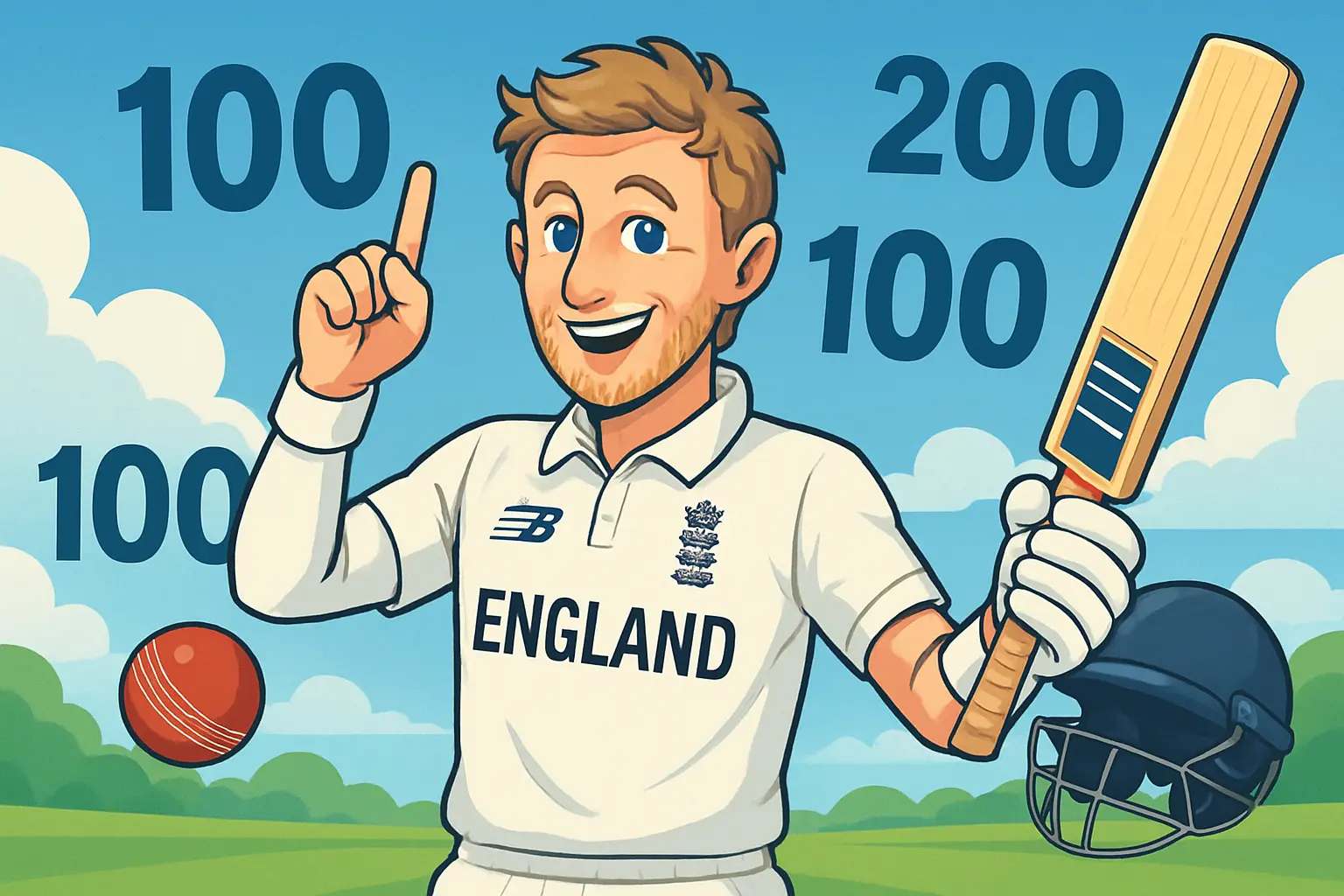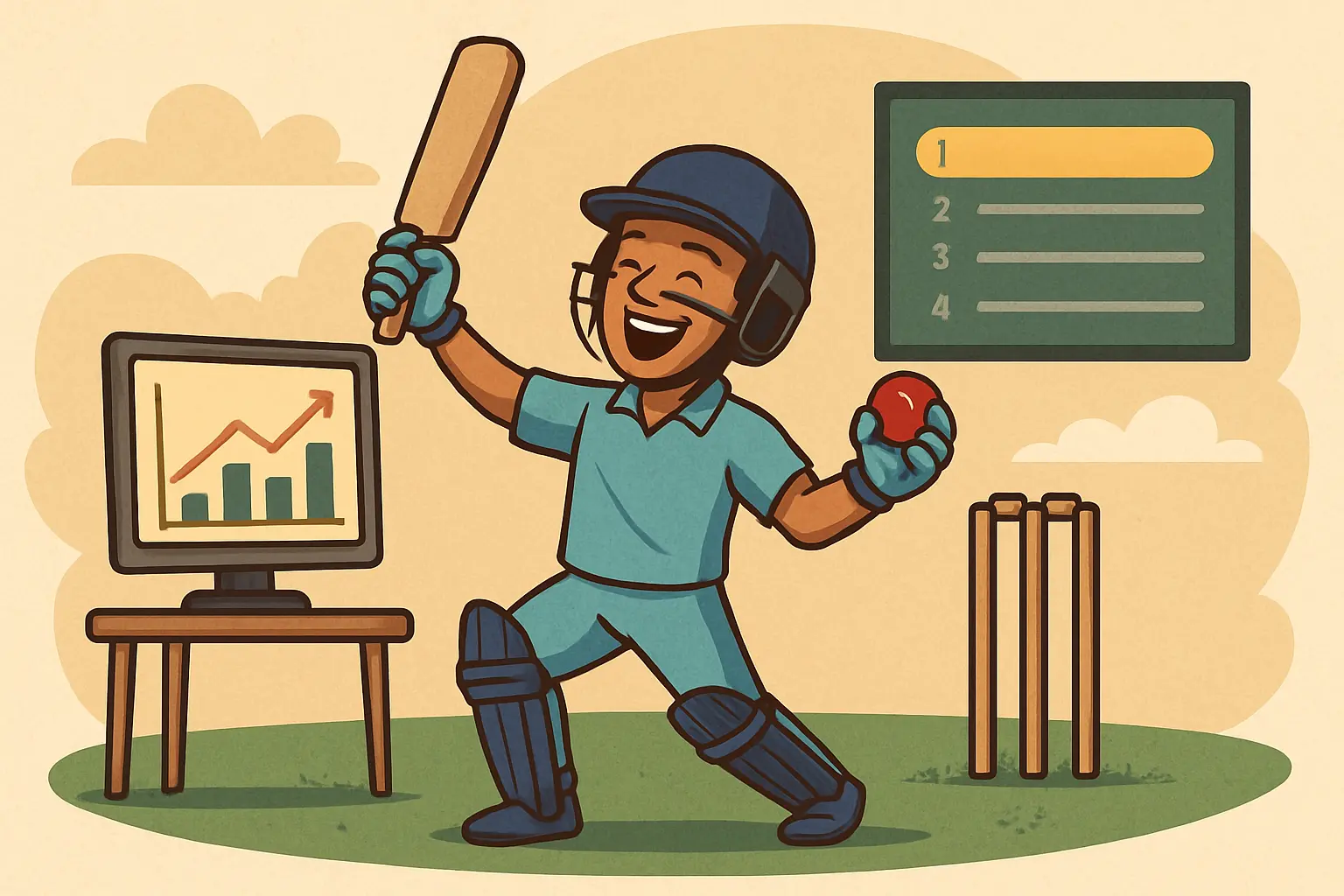
Introduction: Where matches are decided and reputations are forged
Most games take their final breath in the deep end. Two wickets in hand. Twenty needed. The names on the screen shrink to the ones fans remember. A finisher walks in—not to pad stats, not to “express,” but to solve a puzzle that keeps changing with every ball. Anyone who has stood at long-off or under the helmet in those moments knows this role is part skill, part nerve, part cold arithmetic. It is the most unforgiving job in the batting order: succeed and it looks inevitable; fail once and the whole world forgets the previous ten times you got it right.
This is a professional, deeply informed look at the best finisher in world cricket and the greatest finishers in cricket history, grounded in a clear methodology and real on-field insights. We will define the role, set transparent metrics, rank all-time and current finishers across formats, and cover specific leagues and women’s cricket—an area too often left out of the conversation. Expect a mix of data, tactics, and lived experience.
What is a Finisher in Cricket? Role and definition that actually maps to the job
A finisher is the batter tasked with closing innings or chases from positions 5–7 (sometimes 8), typically entering with limited balls remaining and either few wickets in hand (in a chase) or a set platform (in a first innings). Where anchors manage risk over time, finishers compress risk into a handful of deliveries, reading bowlers, fields, and match-ups to squeeze maximum value from the last overs. They make or break results at the death—overs 41–50 in ODIs and 16–20 in T20s.
Finisher vs. anchor in cricket
- Anchor: extends time, stabilizes after wickets, hits in gears, high strike rotation.
- Finisher: compresses time, tolerates high risk, strikes in bursts, focuses on boundary options and two-running patterns.
Finisher responsibilities under pressure
- Decode end-game fields instantly (deep third vs. fine leg, long-on vs. wide long-off).
- Pre-call scoring zones ball-by-ball (yorker length vs. hard length vs. slower ball).
- Choose matchup hits: pace-on vs. pace-off, left-right switches, short boundary targeting.
- Protect the partner or farm strike based on ball-remaining calculus.
- Carry the chase to parity and then “break” it with one or two big swings.
Death overs meaning in cricket
- ODI: Overs 41–50
- T20: Overs 16–20
- Intent: Highest leverage phase (run-rate spikes, wicket risk rises, field spread maximized, bowling plans specific).
Methodology: How this analysis ranks the best finishers
Cricket debates about “best finisher in world cricket” often default to narrative. Narrative matters; so does method. We use the following approach:
- Phase filters:
- ODIs: overs 41–50; and separate lens for run chases
- T20Is: overs 16–20; with extra weight for chases
- Leagues (e.g., IPL): overs 16–20, and entry positions 5–7
- Situational weighting:
- Chases get premium weight over first innings
- High leverage (required rate ≥ 10 in T20, ≥ 8 in ODI death) gets extra weight
- Not-outs in successful chases are valued but normalized for opportunity
- Core metrics (where available through public sources and model approximations):
- Strike rate (SR) at death
- Average at death (or runs per dismissal)
- Boundary percentage and balls-per-boundary (BpB)
- Dot-ball percentage
- Not-outs in successful chases
- Win Probability Added (WPA) or a pressure index proxy (where available)
- Entry impact: runs per ball after arrival, not just overs remaining
- Match-up efficiency: vs. pace/spin at death
- Role fidelity:
- Primary batting positions considered: 5–7 for finishers; occasional 4 and 8 cases where role is consistently finishing (e.g., all-rounders)
- For players who also open or anchor, finishing impact must be evident in the death phase
- Sample size and sustainability:
- Minimum balls faced at death to avoid small-sample skews
- Consistency across geographies and competitions
Table: Metrics and filters used for ranking finishers
| Metric or Filter | Rationale |
|---|---|
| Death overs SR (ODI 41–50, T20 16–20) | Measures late-innings damage |
| Average or runs per dismissal at death | Balances hitting intent with survival |
| Boundary% and Balls per Boundary | Ability to puncture fields with fours/sixes |
| Dot-ball% at death | Pressure management, strike farming |
| Not-outs in successful chases | Clutch closing ability |
| WPA/Pressure index | Quantifies match-turning impact |
| Entry impact (post-entry SR) | True finishing, not just tailwind late hits |
| Role fidelity (positions 5–7) | Ensures we’re ranking actual finishers |
| Match-up splits | Evidence of planned execution (pace vs. spin) |
| Sample size thresholds | Filters one-off purple patches |
The All-Time List: Greatest finishers in cricket history
Picking the no. 1 finisher in cricket across eras is a messy joy. Formats evolved, fielding restrictions changed, white-ball quality and yorker usage have ebbed and flowed. Yet a few names rise above the noise when we standardize for role, phase, and pressure.
1) MS Dhoni — The archetype for closing
- Formats: ODIs, T20I, IPL
- Case: Dhoni built a career on control under chaotic requirements. Elite death-overs SR in ODI chases might not be the absolute highest, but the combination of not-outs in successful chases, last-over wins, and strike management makes him unique. He optimized risk—blocking balls he couldn’t hit, picking bowlers and sides of the ground, taking games deep to shift pressure, and freezing fielding units with running between wickets. His calm never masked the math he was doing: calculated exposure of partners, mid-over tempo changes, and the signature helicopter lift to break yorkers late. In leagues, his tactical reads of bowlers—picking slower-ball lengths and pockets behind square—became a finishing textbook.
2) Michael Bevan — ODI finishing’s founding thesis
- Formats: ODIs
- Case: Before T20 taught everyone range hitting, Bevan turned the ODI chase into a craft of minimal error. Extraordinary average batting deeper than most, left-hand angle to milk off-spinners, and obsessive two-running. His SR wasn’t inflated, but he rarely let required rates explode. Bevan is the proof that finishing is not just six-hitting; it’s the art of ensuring the last over doesn’t require miracles. Many of the current “ice in veins” patterns were his to begin with.
3) AB de Villiers — The ceiling of possibility
- Formats: ODIs, T20I, leagues
- Case: Death overs transformed when AB arrived. His 360-degree hitting compressed the field into irrelevance: lap scoops off full pace, reverse hits off length, pick-up lofts over extra-cover from yorker lengths. Few have matched his death-overs strike rate in ODIs among significant samples. What sets him apart is matchup-agnostic supremacy—right-arm quicks, left-arm angle, wristspin at the death—AB brought plans for each and made bowlers expand their risk. When we model finishing as WPA, AB lights up not only due to strike rate but because his bursts arrived exactly when leverage peaked.
4) Kieron Pollard — League tyrant, matchup assassin
- Formats: T20 leagues, T20I
- Case: Pollard is the league finisher prototype: six-conversion from a stable base, mid-body length murder, and a premeditated game against pace-off. High SR sustained across leagues, extraordinary “six per balls faced” numbers at death, and a career’s worth of rescuing underpowered innings. Pollard’s consistency is anchored not just in brute strength but in game-planning: standing deep to convert length to slot, holding still to punish slower-ball drag, and systematic targeting of the short side. In many data cuts, he’s top tier in balls-per-six at the death with meaningful sample.
5) Andre Russell — The most explosive burst finisher in T20
- Formats: T20 leagues, T20I
- Case: In pure per-ball destruction at death, no one terrifies bowlers like Russell. Across seasons he has posted death-overs SRs that live in a different postcode, with balls per boundary figures that defy normal finishing economics. He can hit full, length, or bouncer with equal disdain; the only true check is early body-line or stump-to-stump hard length before he sets. His finishing is less about farming strike and more about ending the innings with a three-over meteor shower. Among batters with substantial balls faced at death, he’s in the conversation for best T20 finisher purely on rate metrics.
6) Mike Hussey — Mr. Dependable with a late-game twist
- Formats: ODIs, T20I, leagues
- Case: Hussey combined Bevan’s control with modern acceleration. Mid-off gaps, late cuts, whip over midwicket, and sneaky pace-off manipulation. In T20s he often batted higher, but in ODIs and certain league roles, his finishing traits—giant not-out counts and a gears-based approach—were elite. He’s the counter to the misconception that finishing must look violent.
7) Jos Buttler — White-ball closer with surgical options
- Formats: ODIs, T20I, leagues
- Case: Often opening in T20s, Buttler’s finishing credentials come from ODIs and specific T20 seasons where he finished from 5–6. His death hitting against both pace and spin, range of scoops, and unflustered chase temperament put him among the top modern closers. He shapes late and can take apart yorkers with bat-speed and back-of-the-crease hold.
8) Lance Klusener — ODI and early T20 finishing brutality
- Formats: ODIs
- Case: Power before range-hitting was fashionable. Klusener’s late-overs SR in a more bowler-friendly era deserves context. He backed straight-hitting, whipped length to cow corner, and ran hard. His finishing created a blueprint for pace-bowling all-rounders who could end games in a hurry.
9) David Miller — The quiet knife
- Formats: ODIs, T20I, leagues
- Case: Left-handed leverage at death, high six conversion to the short side, and exceptional performance in chases. Miller’s finishing improved with experience; he now picks bowlers, refuses low-value risk early, and trusts his last 10-ball explosion. Among left-handers, he stands alongside Pollard as a model T20 closer.
10) Javed Miandad — Finisher before finishing had a name
- Formats: ODIs
- Case: Not-outs, manipulation of fields, and needle for the extraordinary moment. The last-ball six folklore endures because it was rare for the era; Miandad’s body of work is bigger: he was the original ice-cold calculator, long before tools quantified WPA.
Honorable mentions that would be top shelf in any era
- Glenn Maxwell: Chaos with method; spin demolition late; unorthodox trajectory control
- Dinesh Karthik: A renaissance as a T20 finisher; elite scoop package and boundary options behind square
- Hardik Pandya: Pace-off punisher, excels in strike-farming patterns and sixes straight
- Ravindra Jadeja: In chases, an outstanding “last two overs” left-hander with quick feet and stable base
- Heinrich Klaasen: Right now, perhaps the most efficient spin finisher; slots full and length with outrageous power
- Nicholas Pooran: Rapid alignment into lofts, natural elevation, and fearless tempo at death
- Tim David: Reliable geometry over long-on/long-off, hits lengths without pre-swing, excels in leagues
- Liam Livingstone: Range-hitting from a still base; spin and pace both under threat
- Shimron Hetmyer: Calm in chaos, left-hand angle to long boundaries, excels in last-over chases
- Ben Stokes: Test and ODI chase heroics; thrives in high-stakes, high-leverage climaxes
Who is the current best finisher in world cricket?
“Current” is a moving target, but zoomed in on present form and role fidelity—largely in T20s where finishing is most distinct—the conversation centers on:
- Heinrich Klaasen: unmatched spin-hitting at the death, rhythmic power, terrifying SRs late
- Nicholas Pooran: cleaner swing than most, six-hitting with low cueing, improved match-tempo control
- Andre Russell: still the outlier for burst ceiling, especially with platform
- Tim David: repeatable technique in pressure situations; hits yorkers slightly full or slightly short
- Glenn Maxwell: when set, eliminates spinners in the last four overs like few ever have
- David Miller: lefty finishing security, particularly in chases
- Rinku Singh (league and T20I finishing role): unnervingly calm in 16–20 bursts, strong base, good scoop options
Across ODIs, the “current best finisher” title leans toward players with blended roles:
- Jos Buttler, Hardik Pandya, David Miller, Glenn Maxwell
- Ravindra Jadeja as a chase-specific closer
- Ben Stokes in rarer ODI appearances still flips leverage late
Format-Specific Rankings and Insights
Best finisher in ODI cricket
ODI finishing is different from T20 finishing: more balls, more fielding flexibility, and the need to “ride the chase” rather than manufacture it in bursts. With overs 41–50 as our primary lens:
- MS Dhoni: unmatched combination of not-outs in successful chases, strike farming, and intuitive end-game management
- Michael Bevan: the most efficient chase manager; invented the job’s sensibility
- AB de Villiers: peak SR at death among established greats; could swing ODIs with ten balls to spare
- Michael Hussey: gears personified; rarely looked rushed but always finished
- Jos Buttler: modern closing with scoop architecture, strike rotation and burst power
- Lance Klusener: brutal in an era of fewer hitting aids
- David Miller: matured into a high-percentage ODI closer
- Javed Miandad: early master of chases and clutch presence
- Ben Stokes: chases in pressure, ability to reset tempo in overs 46–50
- Shahid Afridi: volatile but capable of flipping ODI endings with unbelievable SR spikes
Greatest ODI finishers of all time: the Dhoni vs. Bevan debate
- Bevan wins on pure chase stabilization and batting average, especially in lower scoring eras.
- Dhoni wins on modern constraints, higher RR chases, and a more explosive finishing toolkit—including last-over brilliance and tournament-defining closures.
- AB de Villiers is the third vertex: the ceiling of death-overs SR and modern range hitting.
Best finisher in T20 international cricket
This is the pure finishing arena (overs 16–20, roles 5–7). Sample sizes vary, but consistent dominance stands out:
- Andre Russell: when deployed correctly, unmatched per-ball output
- Kieron Pollard: the most consistent league-to-international translation among power closers
- Glenn Maxwell: spin-kill at the death, hard to plan for fields
- Jos Buttler: not always in finishing role for T20I, but has closed with authority when he drops down
- Heinrich Klaasen: current benchmark versus spin; ridiculous SR with minimal premeditation
- David Miller: the steady left-handed closer in T20Is, particularly in pressure chases
- Nicholas Pooran: rapid alignment and loft; few mishit cleanly as often
- Tim David: rapidly building a credible case with range that travels to big grounds
- Dinesh Karthik: specialized finisher’s toolkit; behind-square scoring that compresses fields
- Hardik Pandya: SR with clarity, reads pace-off early
Test cricket finisher: what does it even mean?
In Tests, “finisher” is a misfit label. Fourth-innings chase closers exist—batsmen who manage time and pressure at the end—yet the death-overs framework doesn’t apply. Still, a few players have etched closing legacies:
- Ben Stokes: the modern emblem of a Test run-chase closer; control of tempo, boundary surges, single farming with tail
- Kusal Perera: Durban chase miracle; hitting with a tail in a Test cauldron
- VVS Laxman: not a finisher per se, but repeatedly shaped fourth-innings resolve
- Kane Williamson: understated but clinical chases, soft hands and bottom-hand control under fading light
Best finisher in IPL: history and now
IPL finishing rewards repeatable technique, match-up reading, and stress-proof psychology. Ball quality is high, scouting is relentless, and grounds vary.
The historical shortlist:
- MS Dhoni: the definitive IPL finisher—insane calm, last-over mastery, and control of bowling plans even when not on strike
- Kieron Pollard: match-winner in the heaviest-pressure games; late-over sixes as currency
- AB de Villiers: unmatched ability to break good death plans; scoops, ramps, and straight hits
- Andre Russell: the scariest two-over package ever seen; fields become decorative
- Dinesh Karthik: reinvention and rich closing seasons; behind-square and third-man targeting
- Hardik Pandya: strike-farming and slot hitting, kills pace-off
- Ravindra Jadeja: clutch “12 off 4” type outcomes; quick bat, last-ball nerves
- David Miller: reliable, specifically in chases and on bigger grounds where his loft matters
- Rinku Singh: recent masterclass chases; stays leg-side of the ball, clear hitting arcs
- Shimron Hetmyer: steady nerve, thrives as “bridge to the last over” and closer
Who is the no. 1 finisher in IPL right now?
In form and role fidelity, the debate leans to Rinku Singh, Andre Russell, and Tim David, with Ravindra Jadeja and Heinrich Klaasen not far. The exact order can swivel based on usage: Klaasen often bats earlier, Jadeja’s role oscillates, Russell needs a bit of platform, Rinku and David comfortably land at the crease with 20–30 balls left and deliver high WPA.
League-wise best finishers beyond the IPL
- PSL: Asif Ali (late-overs six-hitting, pace-off punisher), David Wiese (all-round clutch, big six options), Kieron Pollard (in cameo seasons), Tim David (clean length-hitting).
- BBL: Dan Christian (the standard for Australian T20 finishing in leagues), Ashton Turner (range against pace-off and spin), Tim David (again, portable finishing).
- CPL: Andre Russell (home kingdom), Kieron Pollard, Nicholas Pooran, Shimron Hetmyer.
- The Hundred: Tim David, Liam Livingstone (versatile; finishes even when starting earlier), Laurie Evans (trustworthy closer in the format’s unique rhythm).
- SA20: Heinrich Klaasen (dominant), David Miller (calm allocator of risk), Tristan Stubbs (fearless, back-foot spring).
Women’s cricket: the most under-discussed finishing elite
One of the easiest gaps to exploit in cricket coverage is recognizing the best finisher in women’s cricket. The role exists, the pressure is the same, and the execution now rivals the men’s game in sophistication.
- Harmanpreet Kaur: the captain’s finishing energy—manages chases with rotations before unleashing lofted drives and slogs to midwicket. Big-match temperament and a history of closing ODIs and T20Is from 4–6.
- Nat Sciver‑Brunt: unmatched ODI finishing from the engine room; power down the ground, smart strike farming, and the rare ability to beat long-off with a flat hit late. In T20s, accelerates without panic.
- Ash Gardner: modern T20 finisher—dispatches spin and pace-off with long levers, plus a strike zone that extends from full to back-of-a-length. Loves the short side, picks seamers to finish overs.
- Chloe Tryon: pure late-overs power. When a chase needs breaking, she clears her front leg and makes long boundaries look small.
- Richa Ghosh: a new-age finisher with behind-square range and a compact, quick swing; has already closed tough chases with clearheaded intent.
- Sophie Devine: often opens, but when stationed lower, she delivers finishing power with back-foot drives and pick-up lofts to the leg-side fence.
- Deandra Dottin: historically one of the most powerful hitters; closing ability from the middle order across formats and leagues.
- Tahlia McGrath: control plus power; often in dual role but proven closing ability in T20 chases.
- Beth Mooney: not a finisher by role, yet in specific chases closes with ruthless calm, showing that temperament can trump labels.
- Grace Harris: pure T20 finisher’s blueprint; hits lengths with no warm-up, fields evaporate once she locks in.
What makes a great finisher: the technical and tactical spine
Without a reliable method, “clutch” is just a headline. Here’s the reproducible backbone I’ve seen in elite finishers:
- Hitting base and head position: Wide, athletic base with stable head allows late decision-making. Dhoni, Pollard, Tim David hold their head still even while clearing front leg—vital for seeing slower-ball grip and cross-seam wobble.
- Ball-tracking micro-cues: Reading hand speed for slower balls; seam angle for cross-seam vs. wobble seam; thumb position for cutters. Finishers don’t guess; they read.
- Range into the V: Straight-hitting is the antidote to yorkers. AB, Buttler, Miller, and Klaasen keep lofted straight hits in play late.
- Behind-square inventory: Scoops and ramps to dismantle fine-leg/third-man fields. DK and Buttler exemplify.
- Pace-off anticipation: In leagues and internationals, death overs are now majority pace-off. Finishing plans revolve around waiting deep, staying leg-side, and hitting square. Pollard’s legacy is a masterclass here.
- Two-running discipline: Underappreciated. Bevan and Dhoni engineered chases by turning ones into twos with pre-called running lines. It keeps the strike balanced and suffocates the bowling side.
- Strike farming vs. trust: Knowing exactly when to keep strike and when to trust a partner. Dhoni famously gave or denied singles early in the over to position the chase’s last three balls.
- Field geometry: Picking the short side and wind. Modern finishers are quasi-fielding coaches; they know where miss-hits still carry.
- Emotional control: The trick is no rush until it’s time to sprint. Finishers compress time without feeling it compress them.
How to become a finisher in cricket: practical drills and decision maps
This is what separates social-media bravado from real craft. If you’re serious about the role, here’s a compact training blueprint:
- Scenario nets with enforced consequences:
- Start at 16 overs in T20 nets with 45 needed, 5 wickets left. If you lose, run sets. Repeat.
- ODI death modules: 41st over start, 60 needed, 4 wickets left; aim at par scores.
- Ball-tracking practice:
- Coach feeds with visible cues: thumb across seam (cutter), split-finger, back-of-the-hand slower ball. Batter must call type before contact.
- Range-hitting ladders:
- 10 balls targeting long-off, 10 midwicket, 10 behind square scoop; chart hit quality. Build all three lanes.
- Two-running circuits:
- Cones set at deep midwicket; partner with a non-striker calls “two or stay” based on the hit. Teach breath control and early turn.
- Strike-farm logic drills:
- Coaches bowl six-ball sets; batters announce pre-over plan: which balls to take singles on, which to target. Review field placements mid-over.
- Wet-ball and dew sessions:
- Wet ball for bowlers to replicate dew; batters practice adjusting to skiddier pace-off and low bounce.
- Yorkernomics:
- Bowling machine angles to full baseline; batters practice 20 balls lofting dead straight with minimal pre-swing. The goal is contact point discipline.
- Match-up killings:
- Alternate right-arm over into the pitch with left-arm angle full and wider. Batters practice shifting leg-side/crease to open scoring lanes.
The psychology to rehearse:
- Set a fixed “no shot” list for early deliveries each over (e.g., no across-the-line to first ball of the over).
- Micro-resets after dot balls; never let dots pile without a plan.
- Internal scoreboard: balls left, boundary need, partner trust index, short-side orientation.
Country-wise finishers: identity and style snapshots
- India: MS Dhoni defines the archetype; now a pack with Hardik Pandya, Ravindra Jadeja, Rinku Singh, Dinesh Karthik (T20). India’s finishing identity: strike farming + late acceleration, with strong behind-square options.
- Australia: Mike Hussey, Glenn Maxwell, Ashton Turner (BBL), Tim David (league-based), Marcus Stoinis in leagues. Identity: straight-hitting durability and pace-off planning.
- England: Jos Buttler, Ben Stokes (in ODIs), Liam Livingstone, Moeen Ali in T20 bursts. Identity: scoop architecture and flexible batting orders to maximize matchups.
- West Indies: Kieron Pollard, Andre Russell, Nicholas Pooran, Shimron Hetmyer. Identity: six-first approach and comfort with high required rates.
- Pakistan: Shahid Afridi historically, Asif Ali in PSL, Iftikhar Ahmed in late-overs roles. Identity: power streaks with volatility.
- South Africa: David Miller, Heinrich Klaasen, Tristan Stubbs—clinical finishing vs spin and mixed pace. Identity: straight-power plus square-of-wicket options.
- Sri Lanka: Angelo Mathews (ODIs), Dasun Shanaka in patches, Thisara Perera historically. Identity: resourceful finishing under resource constraints.
- New Zealand: Corey Anderson in older cycles, James Neesham in T20 chases. Identity: left-handed punch and intelligent risk allocation.
Death-overs specialists in cricket: what the data says
Across major competitions, the following heuristics hold:
- Boundary percentage tells the truth: SR can be flattered by twos; consistent boundary hitters at death are rare and decisive.
- Dot-ball percentage correlates with leverage stress: elite finishers minimize dots without throwing their wicket at good balls.
- Balls per boundary at death separates true closers from “late cameo” merchants. Sustainable closers maintain BpB well under 5 in T20 death phases over meaningful samples.
- Right now, Klaasen, Pooran, Maxwell, Russell, Tim David, and Miller offer the best blend of SR, BpB, and consistency in death overs across formats and leagues—with role-specific caveats.
A note on “most not-outs” and “highest strike rate” records
- Most not-outs in successful ODI chases: Dhoni and Bevan are high on this list historically; the spirit of the stat matters more than the exact count—it signals trust from team and repeated delivery under pressure.
- Highest strike rates at death (ODI and T20I): AB de Villiers, Jos Buttler, Glenn Maxwell populate the modern ODI list; Russell, Pollard, Pooran, Klaasen, Tim David light up T20 death overs depending on sample filters. Always normalize for minimum balls faced.
Comparisons and evergreen debates
Dhoni vs. AB de Villiers: who is the best finisher of all time?
- Dhoni: superior catalogue of last-over ODI finishes, not-outs in chases, chess-like control.
- AB: unmatched peak in death-overs SR and the ability to defy fields with 360-degree shots.
- Verdict lens: If your team needs a solution from 30 balls with a tail, take Dhoni. If it needs a nuclear option from 12 balls with two set batters or a platform, take AB. Both are all-time greats; the tie-breaker is scenario.
Dhoni vs. Bevan: the finisher evolution
- Bevan built the method in lower-scoring eras; Dhoni expanded it in higher RR environments with more power hitting and better pace-off bowling. The baton pass is the story of ODI finishing.
Best finisher—India vs. world
- India’s depth in finishing roles is unique, but the sheer per-ball fear factor of West Indies finishers (Pollard, Russell, Pooran) gives the world composite an edge in T20. In ODIs, India’s finishing lineage is richer thanks to Bevan’s equivalent being Australian and Dhoni being Indian—tilting narratives by format.
Tactical breakdown: How finishers dismantle death overs
- Against yorkers: deep stance, slight back-foot drag, hands late through ball, straight loft; if the yorker misses full by 10 cm, it’s a slot ball—go.
- Against slower-ball bouncers: early pick-up from seam grip; pull with high hands or guide to deep third if fine is up.
- Against wide yorkers: change guard to off, reach with toe-end loft over cover; or leave early and wait for slot.
- Against cross-seam on a two-paced pitch: wait, hit square; avoid big backlift. Klaasen’s method against spin/cutters is exemplary.
- Against wristspin at death: pre-call zones—cow corner if short side, inside-out if mid-off up. Maxwell and Klaasen do this with near-unfair clarity.
Running patterns:
- first ball exploration, middle-ball targeting, fifth-ball insurance single if partner is trusted. Dhoni’s standard blueprint.
Tables: Snapshot rankings without drowning in numbers
Table: All-time finishing shortlist (multi-format lens)
| Rank | Player | Primary role | Why it holds up across eras |
|---|---|---|---|
| 1 | MS Dhoni | ODI/T20 finisher | Not-outs, last-over mastery, risk math |
| 2 | Michael Bevan | ODI finisher | Chase architecture, two-running, error minimization |
| 3 | AB de Villiers | ODI/T20 finisher | Peak SR, 360-degree death hitting |
| 4 | Kieron Pollard | T20 leagues | Sustainable six economy, pace-off plans |
| 5 | Andre Russell | T20 leagues | Unmatched burst ceiling |
| 6 | Mike Hussey | ODI/T20 | Gears and assurance |
| 7 | Jos Buttler | ODI/T20 | Scoops + straight lofts, calm tempo |
| 8 | Lance Klusener | ODI | Era-adjusted power closing |
| 9 | David Miller | ODI/T20 | Lefty leverage, chase reliability |
| 10 | Javed Miandad | ODI | Early finishing DNA, clutch memory |
Table: Current finishing pulse (T20-heavy, role-fidelity)
| Tier | Players | Distinct edge |
|---|---|---|
| Elite | Heinrich Klaasen, Nicholas Pooran, Andre Russell, Tim David | Spin demolition + slot-punish; repeatable power in 16–20 |
| Inner circle | David Miller, Glenn Maxwell, Rinku Singh, Ravindra Jadeja, Jos Buttler | Calm in chases; mixed-lane scoring |
| On the rise | Tristan Stubbs, Liam Livingstone, Shimron Hetmyer, Rahul Tewatia | Matchup-aware hitters with closing reps |
Frequently asked questions (expert answers in plain language)
Who is the No. 1 finisher in world cricket right now?
On current evidence weighted to T20 closing and ODI chases, Heinrich Klaasen, Nicholas Pooran, Andre Russell, and Tim David sit at the top. If forced to pick one for a death-overs spin-and-cutter scenario, Klaasen gets the nod; for raw pace or platform-accelerations, Russell; for balanced death scenarios across geographies, Miller or Tim David provide a very high floor.
Is MS Dhoni the best finisher of all time?
If you value repeatable, pressure-proof closing in ODI chases and tournament-defining last overs, yes—Dhoni is the best finisher in cricket history. AB de Villiers brings a higher per-ball ceiling, and Bevan offers the foundational chase method. But Dhoni’s blend of not-outs, game math, and authority over bowling plans gives him the undisputed crown in all-conditions finishing.
Who is the best finisher in ODI cricket?
MS Dhoni remains the benchmark. Bevan, AB de Villiers, Hussey, and Miller follow as the most rounded ODI closers across eras. Situationally, Ben Stokes and Jos Buttler are outstanding late-game operators.
Who is the best finisher in T20I cricket?
The most complete finishing impact in T20I belongs to a pool: Andre Russell, Kieron Pollard, Glenn Maxwell, David Miller, Heinrich Klaasen, and Nicholas Pooran. Form and usage dictate exact ordering, but this is the group that shifts outcomes.
Who is the best finisher in IPL history?
MS Dhoni, with Pollard, AB de Villiers, Andre Russell, Dinesh Karthik, and Hardik Pandya forming the core of the next tier. Rinku Singh’s recent body of work has been spectacular and is tracking toward long-term elite status.
What makes a great finisher in cricket?
A method that survives pressure: stable base, late decision-making, behind-square scoring to beat wide yorkers, straight lofts for missed yorkers, a plan for slower balls, and a two-running habit. Add an emotional thermostat that keeps the room cool. Numbers matter, but the quiet choices between balls matter more.
Which player has the most runs in death overs? Who has the highest strike rate in the last five overs?
Across leagues, Andre Russell and Kieron Pollard have piled up extraordinary death-overs runs with exceptional strike rates. In T20Is and ODIs, AB de Villiers and Jos Buttler show peak SRs at death among recognized samples. Exact leaderboard positions can vary by sample filters; always apply minimum balls faced and era adjustments.
Who has the most not-outs in successful ODI chases?
MS Dhoni and Michael Bevan are historically prominent. The spirit of the stat is the point: teams kept trusting them to be in at the end—and they kept delivering.
Glossary and explainer notes for clarity
- Death overs: last 10 of an ODI, last 5 of a T20—highest scoring and pressure phase.
- Strike rate (SR): runs per 100 balls—contextualized by phase.
- Boundary percentage: percentage of balls that go for four or six.
- Balls per boundary (BpB): how quickly a batter finds a boundary—lower is better.
- Win Probability Added (WPA): how much a player changes the likelihood of winning.
Fieldcraft moments that reveal the finisher’s mind
- The fake wander: Watch a finisher walk to square leg between balls while peeking at the keeper’s gloves for premeditated wide-yorker cues.
- The “late trigger” for scoops: Buttler and DK set late, dip the back knee at the last instant. If the bowler misses the wide yorker by a hair, the scoop becomes a safe four.
- The partner whisper: Dhoni telling a younger partner “run on everything to the outfield”; that pre-call yields one crucial two that most viewers forget while discussing the final six.
- The sunny-side boundary: Klaasen taking one extra look at the wind flag before choosing the leg-side hit over the conventional off-side loft into breeze.
- The gloves change: Not superstition—an excuse to break the bowler’s rhythm and reset the field for a fresh plan.
Why women’s finishing will lead the next skill jump
Pace-off and quality wristspin are deepening across women’s leagues, bringing the death-overs tactics of men’s T20 to the fore. Finishers like Nat Sciver‑Brunt and Ash Gardner have developed repeatable methods—straight hits and square-of-wicket power—that translate across venues. Expect more specialized finishing roles and dedicated death-overs practice blocks in high-performance programs. The undervalued edge is two-running discipline; teams that embed it at a systemic level will win tight games more often than raw SR might predict.
A coach’s checklist for building a finishing unit
- Role clarity: Assign at least two batters as primary closers and one as bridge (overs 12–16 in T20 or 36–40 in ODIs).
- Match-up planning: Pre-plan at least two targets per opposition bowler at the death (e.g., wide yorker over extra-cover vs. back-of-length pull square).
- Time-outs: Use to lock field geometry for the final set—short side, wind, and which boundary the bowler is protecting.
- Batting order flexibility: Promote based on matchup. Don’t let “name” override the plan if the surface screams Klaasen over a pace‑preferring finisher.
- Drills: Track BpB and dot% in simulated death overs. Reward low dot% even if SR is identical.
Conclusion: The final word on finishing—and why it still stirs us
The best finisher in cricket is the player you trust when the room gets small. It isn’t just about hitting the last ball for six. It’s about the invisible math after a dot, the no-ego single off a good ball, the deliberate selection of a bowler to target, the quiet repositioning of guard to turn a yorker into a half-volley. Dhoni taught a generation that calm is a tactic; AB proved that geometry has no limits; Pollard and Russell showed that power can be repeatable when built on the right bases; Klaasen, Pooran, and Tim David now demonstrate that modern finishing is a system, not magic.
If you’re looking for a single name, MS Dhoni is the all-time answer. If you’re asking about today’s form, Heinrich Klaasen is the most reliable solution against contemporary death plans, with Nicholas Pooran, Tim David, David Miller, Glenn Maxwell, and Andre Russell forming a fearsome circle around him. In ODIs, the names tilt toward Dhoni, Bevan, AB, Hussey, and Miller; in the IPL, Dhoni remains the gold standard with Pollard, AB, Russell, DK, and the emergent Rinku Singh closing fast.
Finishing will keep evolving. Bowlers will mix more cutters, batters will refine their scoop maps, analysts will produce finer WPA splits. But the essence won’t change: one batter, one plan, a field of 11 trying to stop the inevitable. The best finishers don’t chase glory—they engineer it.






